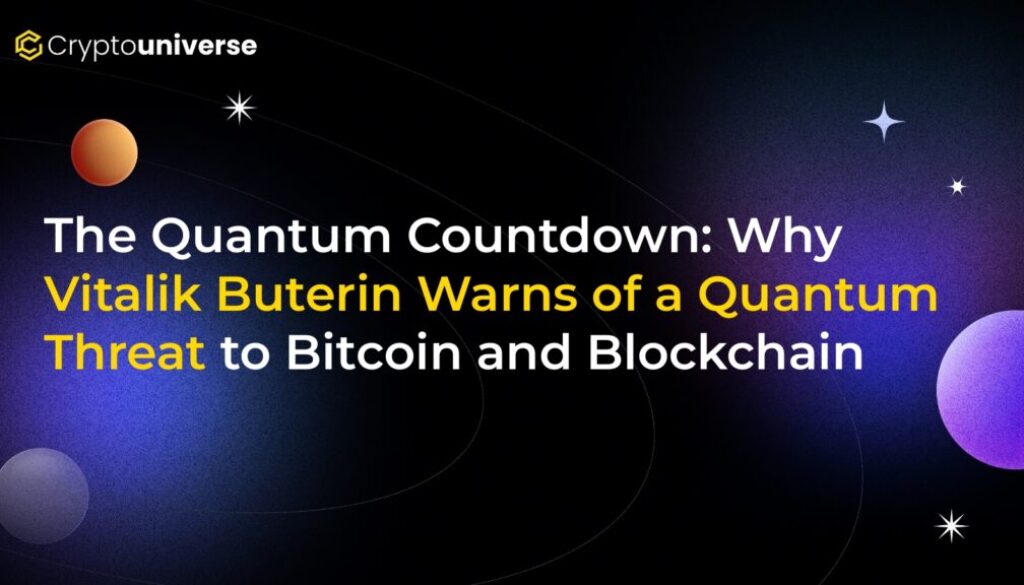The Quantum Countdown: Why Vitalik Buterin Warns of a Quantum Threat to Bitcoin and Blockchain

A Stark Warning from the Heart of Crypto
Imagine a key that could unlock nearly any digital vault in the world. That’s the potential power of quantum computing, and according to Ethereum co-founder Vitalik Buterin, it poses a significant threat to the very foundations of cryptocurrency. Buterin has issued a serious wake-up call, estimating a 20% chance that quantum computers could break the cryptography securing Bitcoin and other blockchains by 2030. By 2040, he warns, that risk could be substantially higher.
This isn’t just a distant, theoretical problem. It’s a ticking clock that has developers, investors, and even financial giants like BlackRock paying close attention. The race is on to secure the future of digital assets before the so-called “Q-Day”—the day a quantum computer shatters our current encryption standards.
What is the Quantum Threat, Exactly?
To understand the danger, we first need to grasp what makes quantum computers different. Your laptop or phone uses bits, which are tiny switches that can be either a 0 or a 1. Quantum computers use “qubits,” which can exist as a 0, a 1, or both simultaneously thanks to a principle called superposition. This allows them to process a mind-boggling number of calculations at once, far surpassing the capabilities of even the most powerful supercomputers today.
This immense power is a double-edged sword. While it could revolutionize fields like medicine and artificial intelligence, it could also become the ultimate skeleton key for hackers.
Bitcoin’s Achilles’ Heel: Public Key Cryptography
The security of cryptocurrencies like Bitcoin and Ethereum hinges on a type of encryption called public key cryptography. Specifically, they use an algorithm known as the Elliptic Curve Digital Signature Algorithm (ECDSA) to protect your wallet.
Here’s how it works in simple terms:
- Private Key: This is your secret password. You use it to sign transactions and prove you own your crypto. You must never share it.
- Public Key: This is derived from your private key and acts like your bank account number. You can share it safely to receive funds.
With today’s technology, it’s virtually impossible to reverse-engineer a private key from a public key. It would take a classical computer billions of years. However, a sufficiently powerful quantum computer running a specific algorithm (Shor’s algorithm) could potentially do it in hours or even minutes. If a hacker gets your private key, they have full control of your funds.
The Race for Quantum-Resistant Blockchains
The good news is that the crypto community isn’t sitting back and waiting for a catastrophe. The conversation around the
This involves replacing vulnerable algorithms like ECDSA with new ones that are believed to be secure against both classical and quantum computers. Ethereum is already actively exploring and testing several promising candidates, including:
- Lattice-Based Cryptography: This method hides secret information in complex, multi-dimensional geometric structures called lattices.
- Hash-Based Signatures: This approach uses one-time signatures that are highly secure but require careful management.
Even the Bitcoin community, known for its slow and cautious approach to upgrades, is aware of the threat. In fact, some argue that Satoshi Nakamoto himself alluded to the need for future cryptographic upgrades in his early writings. The work to make Bitcoin quantum-safe is happening now, albeit quietly, in developer forums and research papers.
Why We Need to Act Now
While a quantum computer capable of breaking Bitcoin’s encryption doesn’t exist today, the urgency is real. Experts warn of “harvest now, decrypt later” attacks. This is where malicious actors are already collecting vast amounts of encrypted data today, intending to store it until a quantum computer is available to crack it open in the future.
Vitalik Buterin’s 20% probability by 2030 isn’t a prediction to be taken lightly. Upgrading the core cryptography of a multi-billion dollar decentralized network is a monumental task that requires years of testing, consensus, and careful implementation. Waiting until the threat is imminent would be far too late.
The entire digital world—from online banking and secure communications to national security—relies on the same types of encryption that protect crypto. The work being done to create quantum-resistant blockchains will have a ripple effect, helping to secure our entire digital future.
The quantum era is approaching. While it brings unprecedented challenges, it also highlights the crypto industry’s core strengths: innovation, adaptation, and a relentless drive to build a more secure and decentralized world. Preparing for the quantum future isn’t about succumbing to fear; it’s about proactively building the resilient systems of tomorrow.


